Boy, oh boy, when we talk about firearms history, I have a hard time thinking of one richer than the 1911.
America loves the M1911, as evidenced by the fact that several gun manufacturers cling to the design.
It’s one of the few firearms out there with such a long production history. Not to mention, it’s likely the most produced American handgun in the world.
But beyond its service (Two World Wars!), what else is there to know about the M1911? As it turns out…a lot.
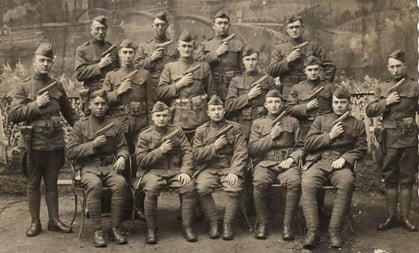
We’re going to take a deep dive into the history of one of the world’s most popular pistols to show you exactly why this design is so enduring!

Table of Contents
Loading…
It Starts With Browning
Like most famed American firearms, the M1911 came together from the efforts of John Moses Browning.
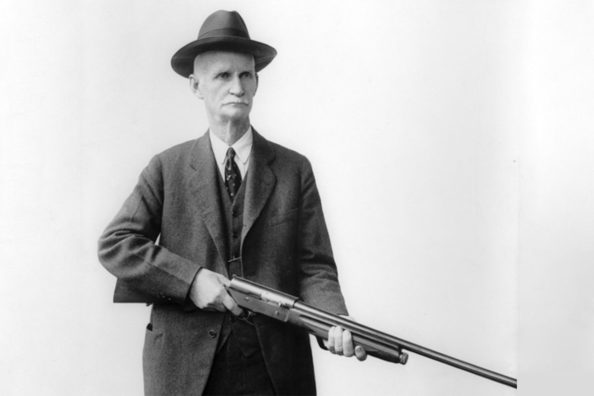
Browning’s beautiful mind created machine guns, shotguns, rifles, and handguns of all sizes.
Weapons like the M2 machine gun and M1911 are still in military use to this day.
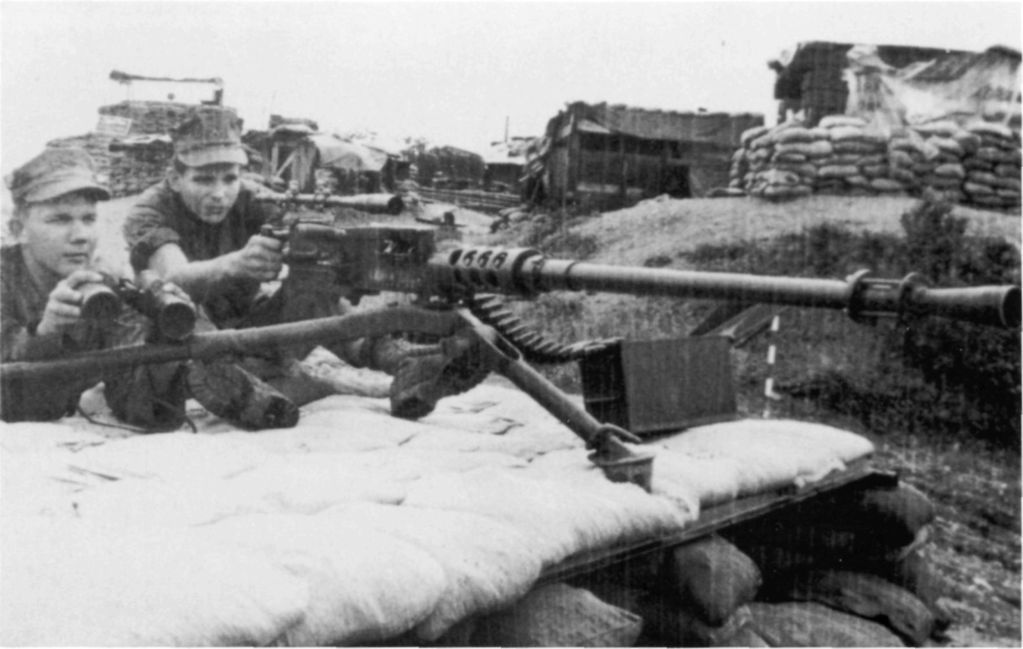
Like most of Browning’s firearms, the M1911 came to be because revolvers were becoming obsolete. On the eve of the 1900s, the United States military looked to modernize and standardize their rifles and handguns.
Colt M1900: Where It All Began
In terms of handguns, the military utilized a variety of different revolver designs.
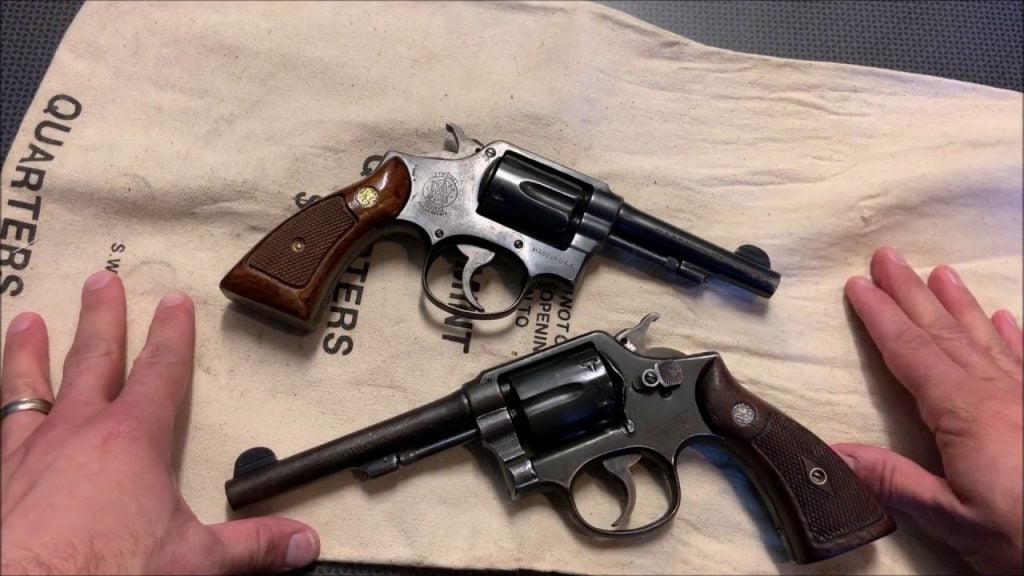
Some were modern like the M&P series of the time, and others dated back to the days of cowboys and the old west.
The U.S. Army, and the military in general, knew the simplicity of having a single firearm issued to the bulk of the military.
Also, oddly enough for the United States military, they were looking to the future in small arms design!
Revolvers were slowly going the way of the Dodo, so they wanted one of those newfangled semi-automatics that Europe was all hot and bothered about.

Word got out, and the smell of a big contract lingered in the air. Companies rallied to present a design to the Ordnance board.
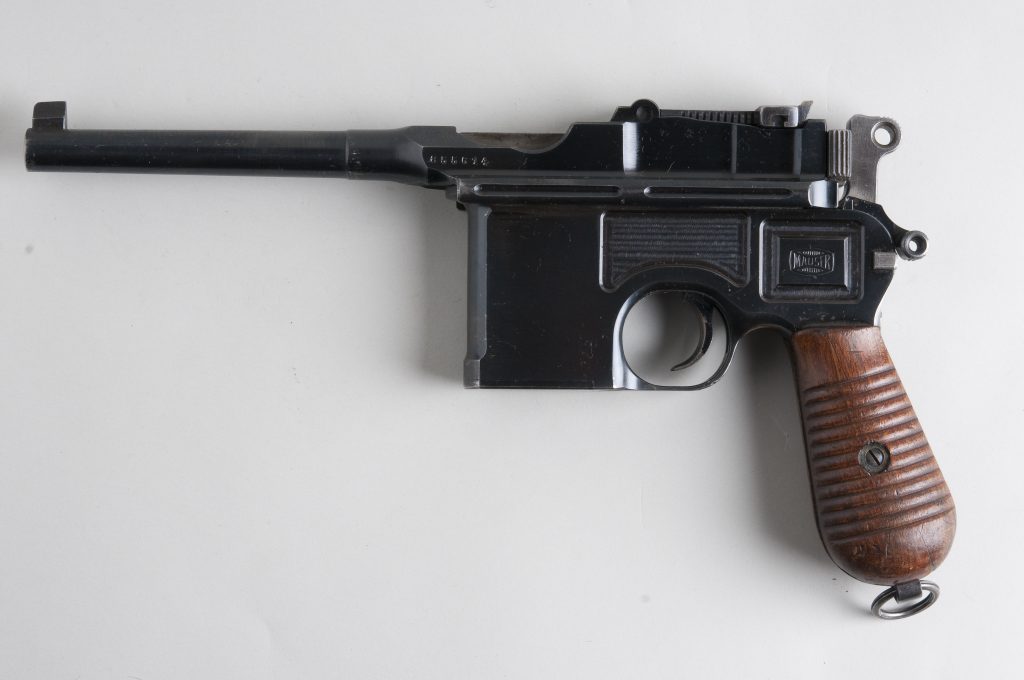
Mauser sent the always cool C96, Mannlicher sent the M1894 (which is a steampunk dream), and Colt sent the M1900.
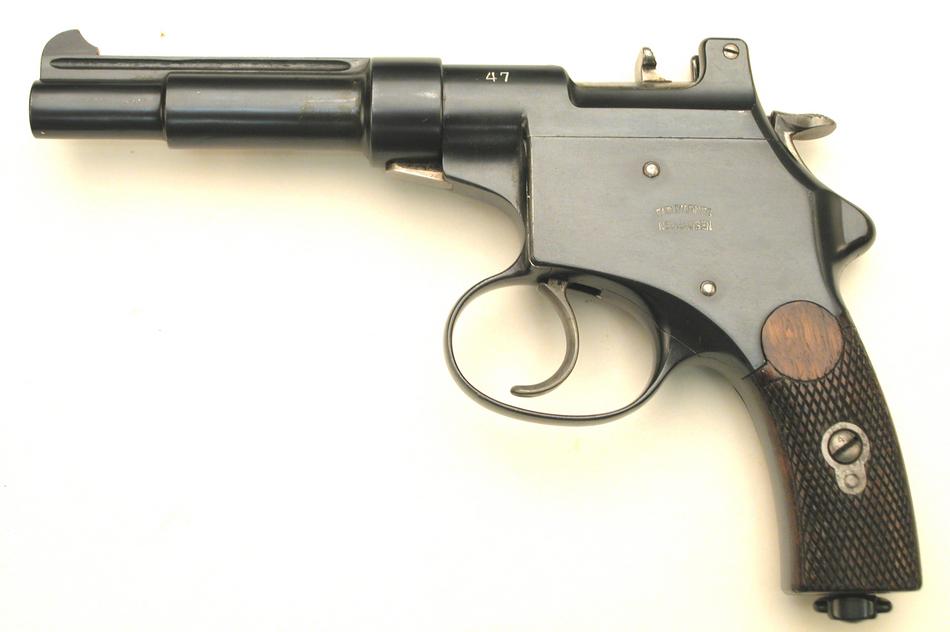
The M1900 was the first pistol to utilize the Browning Short Recoil design and was chambered in .38 ACP.
One look easily tells you that the M1911 was descended from this humble pistol.
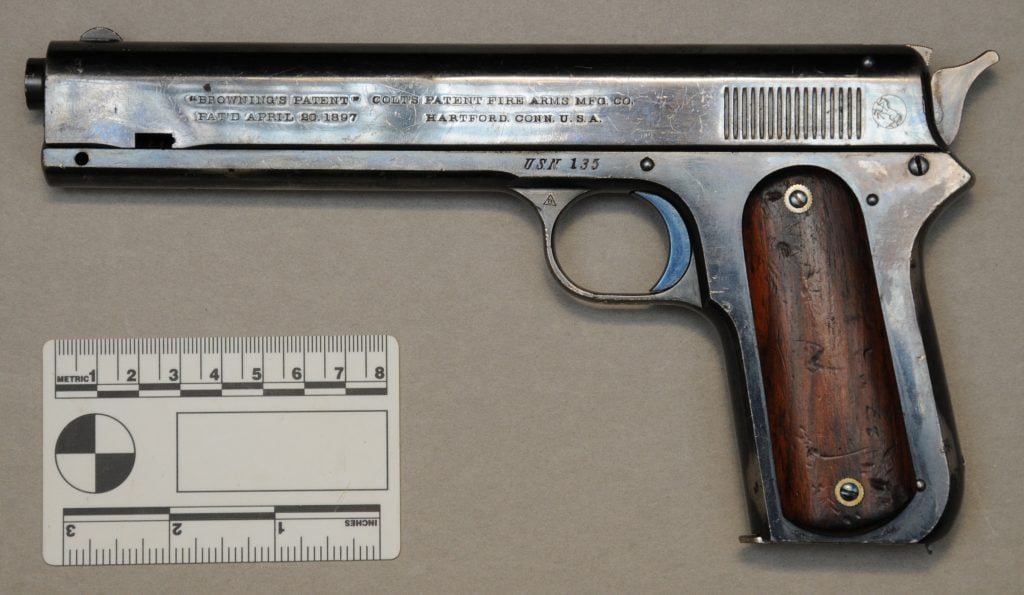
So who won?
Well, I read over the Report of the Chief of Ordnance, and none of them did very well.

All three suffered from substantial failures, including parts breakage in just a few hundred rounds. Of the three, the ol’ M1900 did the best…but it didn’t do great.
It was seemingly the only pistol to last the entire endurance test, but Colt sent a gunsmith to fix numerous issues with the weapon throughout the testing.

A short time later, the Colt M1900 got a second chance and performed better…but still had parts breakage and issues early on.
This was more akin to a beta test than what we see in arms testing today.
Eventually, the M1900 fired 5,800 rounds of .38 ACP and concluded that the only major issue was long link pins.
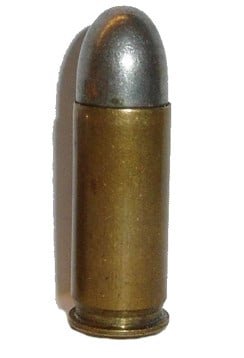
Here’s an interesting read from the report after the second round of testing and the conclusion of the testing of all three pistols:
Colt automatic pistol. — The test to which this pistol was subjected was in every way more severe than that to which revolvers have been heretofore subjected, and the endurance of this pistol appears to be greater than that of the service revolver.
It possesses further advantages as follows: Very simple construction. It is easy to operate. It is not liable to get out of order. It is capable of a very high rate of fire.
It can be conveniently loaded with either hand. It gives a high initial velocity and flat trajectory. It is more accurate than a revolver.
Throughout the testing, it is apparent that the Colt M1900 was favorited for more than just its performance.

American-made was an important consideration at the time, and I believe that was the main reason why it received a second bout of testing over the C96.
(Mannlicher’s pistol failed the hardest.)
Colt M1902: Sporting and Military Models
What’s new is old, I imagine. Although the Army conducted tests, they never chose a pistol. We see the military do that all the time.
How many times has the M4 been set to be replaced, but the trials go nowhere?

However, Colt did not stop working on the Colt M1900. Eventually, the M1902 arrived.
Even though the M1900 hadn’t passed the trials, the M1902 Sporting and Military models entered normal production.
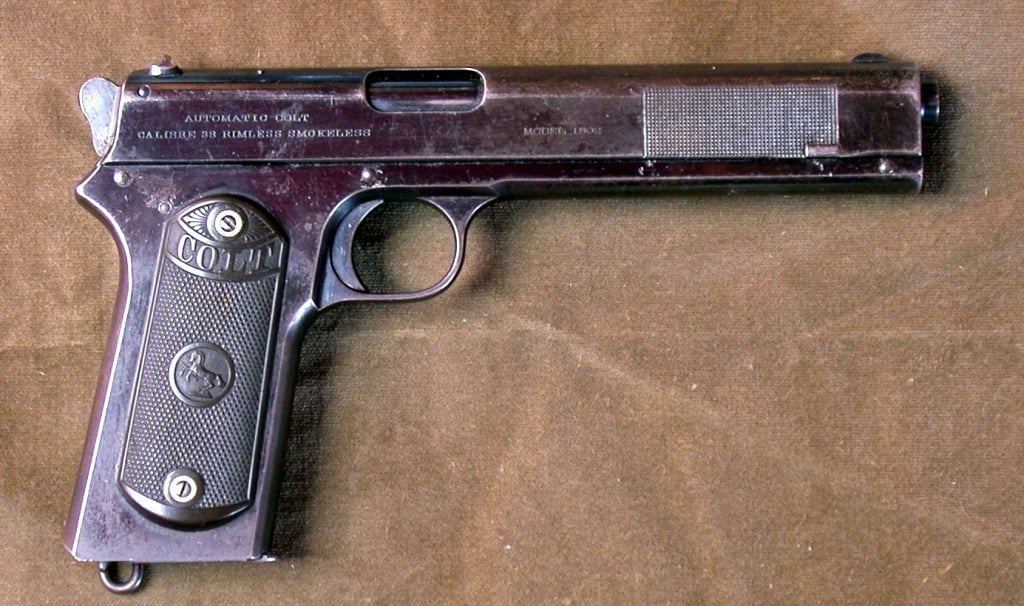
If you’re wondering the difference between the two, the Sporting model was slightly smaller and lighter than the Military model.
The 1902 Military was fitted with a longer grip frame, a square butt grip, a mechanical safety, and a lanyard loop — small improvements, but ones that would continue to help the Colt stand out.
The U.S. Army decided to test the Luger series from DWM (Deutsche Waffen- und Munitionsfabriken). Immediately, the 7.65 caliber projectile was canned for being too weak.
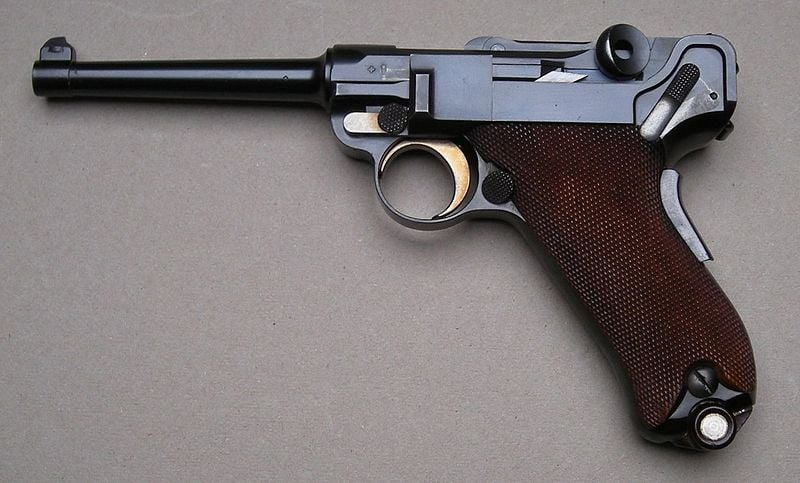
A small number of 9mm Lugers were sent for testing in 1903, but testing went nowhere.
An interesting event occurred in this time frame known as the Moro rebellion, which saw U.S. Forces facing off with the Moro people in the Philippines.
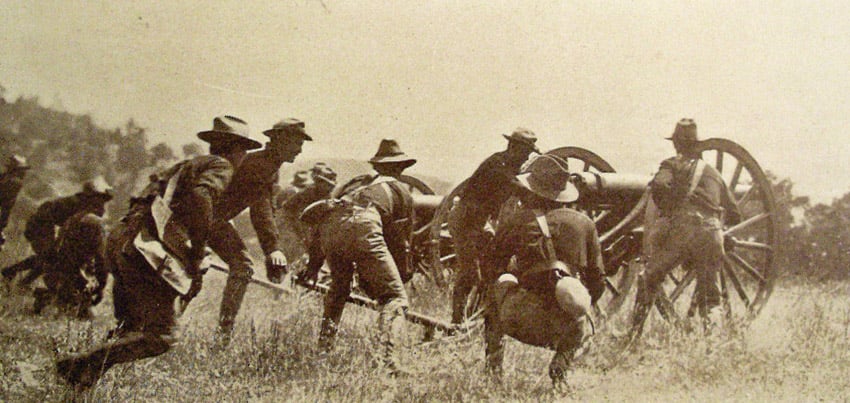
What the Army learned here is that, apparently, .38 caliber cartridges did not have the “stopping power” they desired.
So, they reverted back to .45 Colt revolvers, and the U.S. Army launched a pistol round effectiveness test.
The Thompson-Legarde pistol round effectiveness test saw soldiers and doctors shooting various animals and reporting on the ballistics they observed. Very scientific.

Out of this came the declaration that the pistol should be a .45 caliber and preferably semi-automatic.
Colt 1907 Contract Models
The call went out once more, and that delicious contract smell was in the air.
Six guns chambered in .45 ACP were submitted. Colt turned over the new M1905, and it became the clear victor.
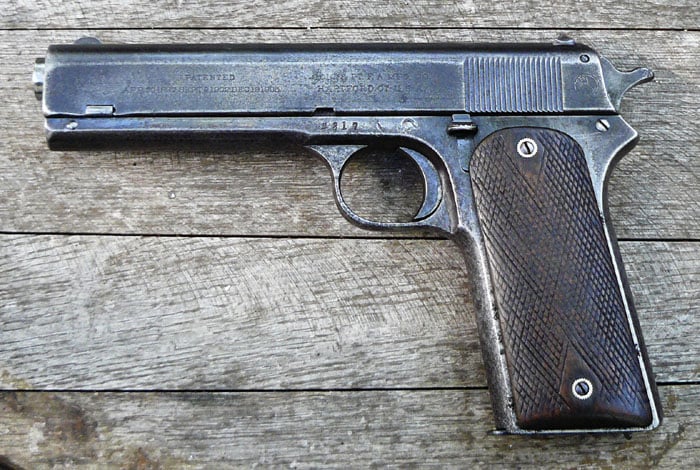
After all was said and done, Colt and Savage made it to the end of the testing.
The M1905 had a long way to go, but the Army ordered 200 for evaluation. These 200 pistols became the 1907 Contract models. (One of the rarest Colt models in existence!)
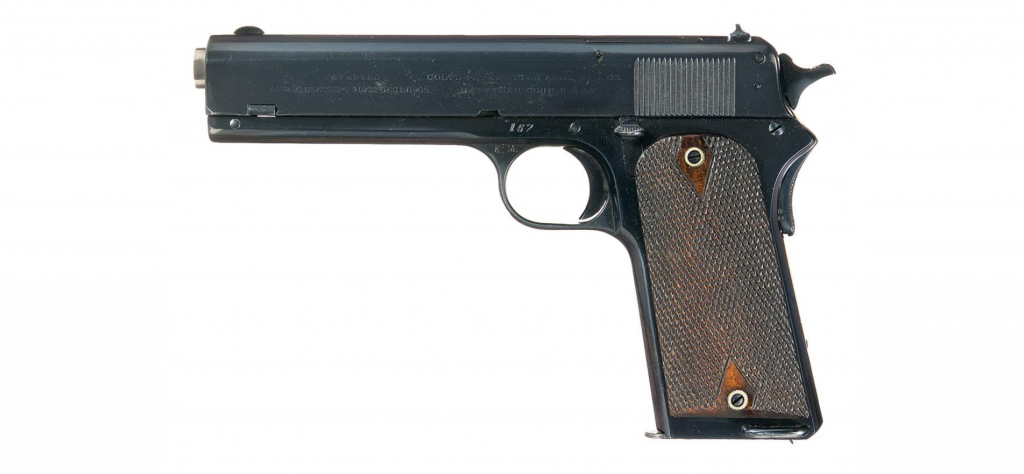
To appease the Army, Colt installed a grip safety and shoulder stock attachment point at the behest of the Army. They also enlarged the ejection port and reinforced the ejector.
Colt installed a spurred hammer, and of course, the lanyard loop requested by the Army.
Throughout 1909 and 1910, the M1907 underwent extensive testing. Along the way, design changes were implemented as problems arose.
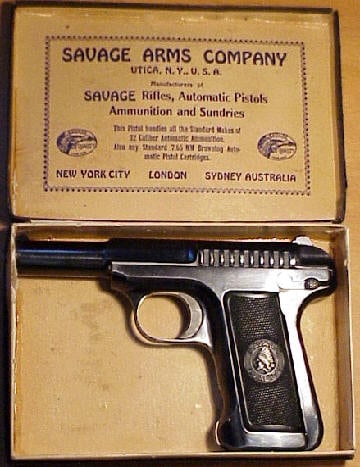
Ultimately, the War Department believed the gun proved too complicated for the average enlisted soldier. So, it needed some modifications.
Colt M1910: A Game Changer
Colt replaced the double-link barrel locking system with a single toggle link.
This little change simplified the handgun, providing it with more durability. It also created the famous tilting barrel design we see in a wide variety of handguns these days.

Small changes occurred here and there, like slight changes to the grip angle. It got to the point where the 1910 model looked almost exactly like the M1911 we all know and love.
This became the M1910.
During testing, the gun developed ejection issues that could not be fixed at the range, so it was sent home.
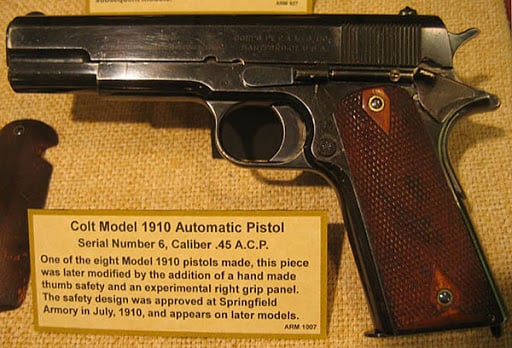
Additionally, the Calvary wanted a manual safety, feeling that carrying it cocked and locked would cause negligent discharges.

So, Colt provided one in addition to pushing the extractor to the inside of the slide to improve reliability.
The Colt 1911 Arrives
The final phase of military trials pitted Savage and Colt pistols against one another. These two went head to head with a pile of 6,000 rounds for each gun.

The Colt M1910 suffered 12 malfunctions, while the Savage suffered 43 malfunctions.
Savage pistols also required parts replacement during the testing. While the Colt M1910 wasn’t flawless, it performed admirably.
The Commanding Officer of the Springfield Armory, the Chief of Ordnance, and the General Staff all agreed that the M1910 should be the United States’ next firearm.
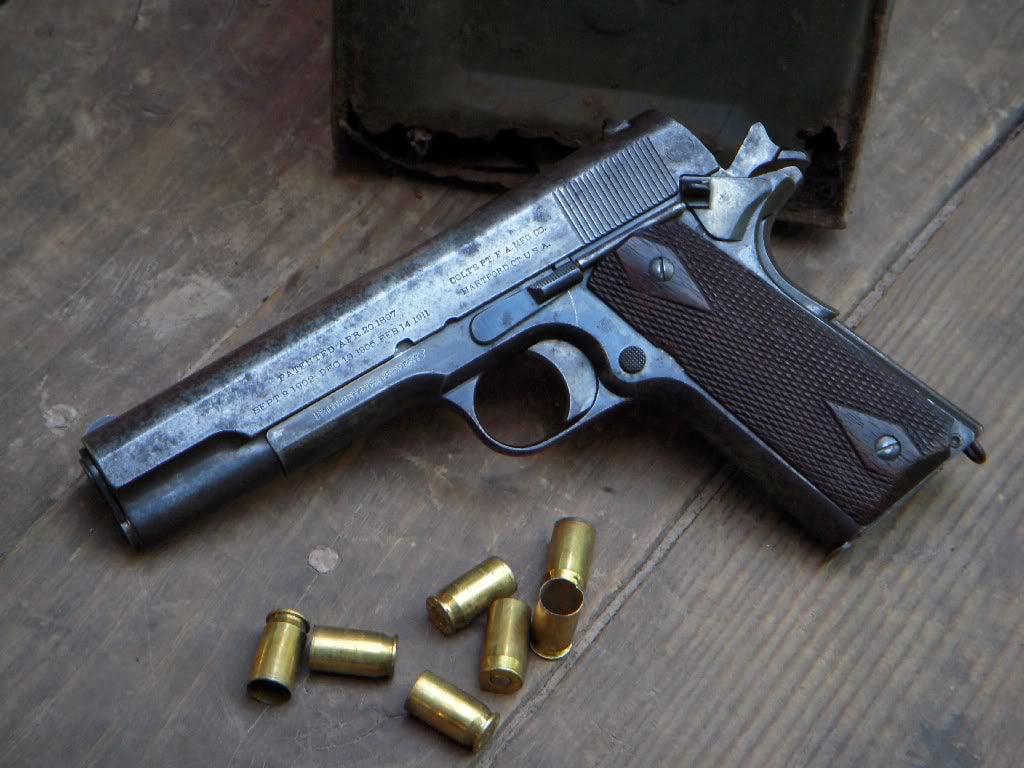
The Secretary of War Jacob M. Dickinson approved Colt’s pistol.
Thus was born the Model of 1911 on March 29, 1911.
The M1911 & The Great War
By the time World War I rolled around, over 63,000 M1911s had been delivered to the United States Military.
As the war ramped up, it became apparent that Springfield Armory and Colt could not keep up with demand, so contracts went to Remington, Savage, Winchester, and many more to produce the M1911.
Everybody was making 1911s…something we still see today!
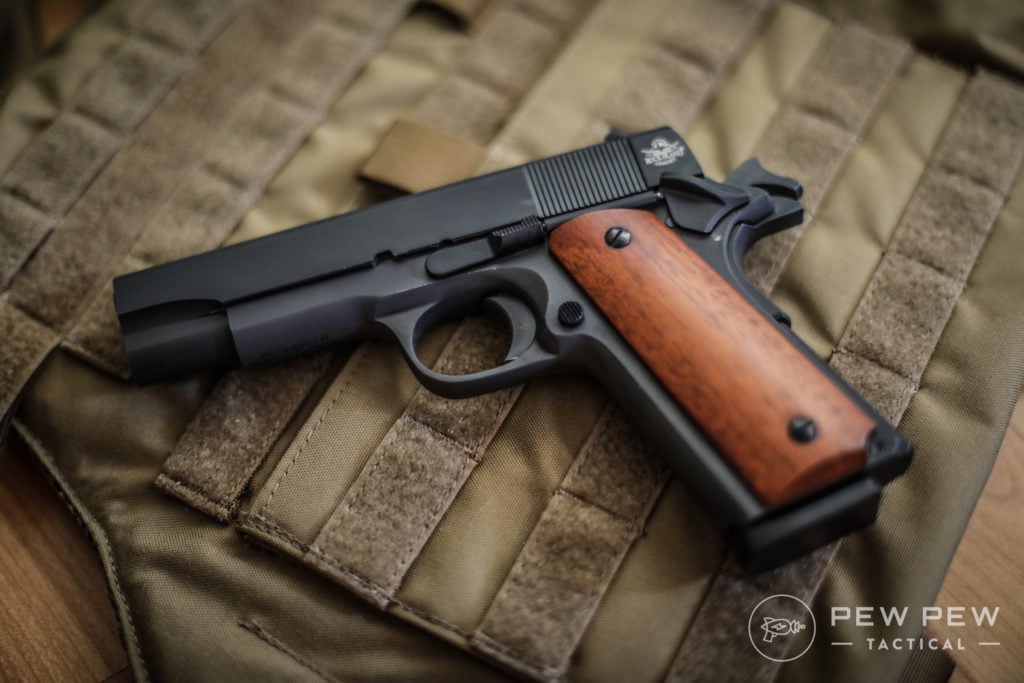
Brutality reigned in World War I — trench warfare was harsh and unforgiving.
In the close-quarters fighting of the trenches, the big long rifles weren’t the best option.
Handguns offered a rapid-fire option more wieldy in close-quarters combat.
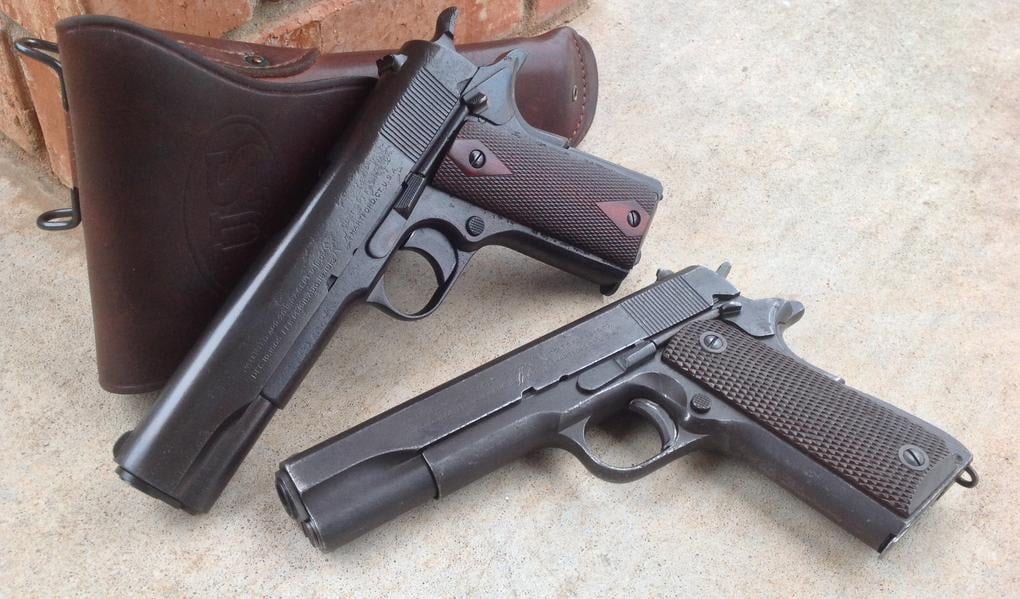
Alvin York famously used one in the event in which he earned his Medal of Honor.
He led troops against a superior force and used his rifle to systematically take down German machine gunners.
As he ran low on .30 caliber ammunition, a German officer led five men on a bayonet rush toward Corporal York. As they charged, he pulled his M1911 and dropped all five of them with devastatingly accurate fire.
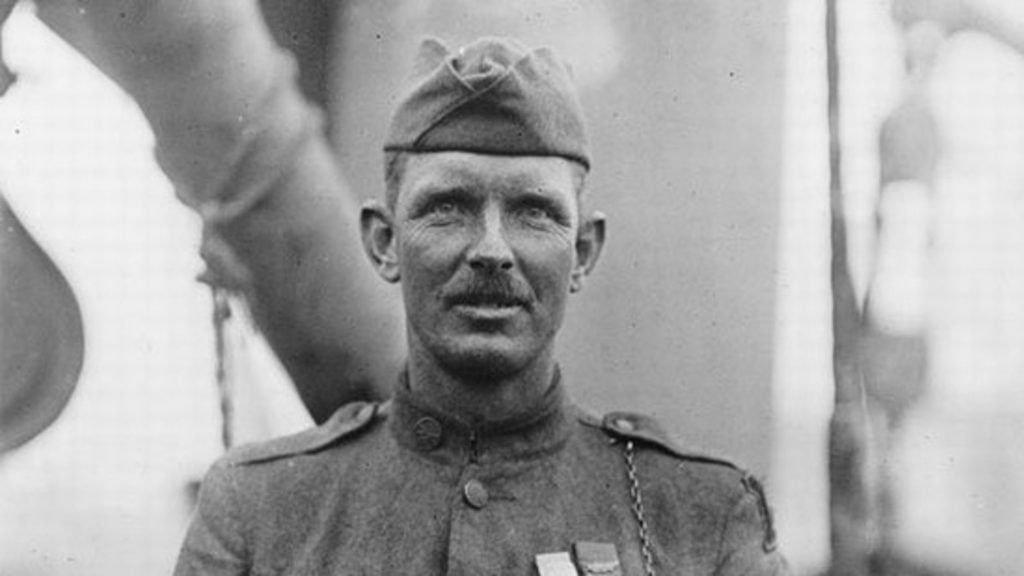
Later, when a force of 50 Germans surrendered to York, he used his M1911 to ensure compliance. He had a German officer order more Germans to surrender along the way.
Alvin York and his troop captured 132 men in total.
The M1911A1 Is Born
It turns out a long and brutal war exposes flaws with any design, and the M1911 was no different.
Between World War I and WWII, the 1911 design saw a few changes.
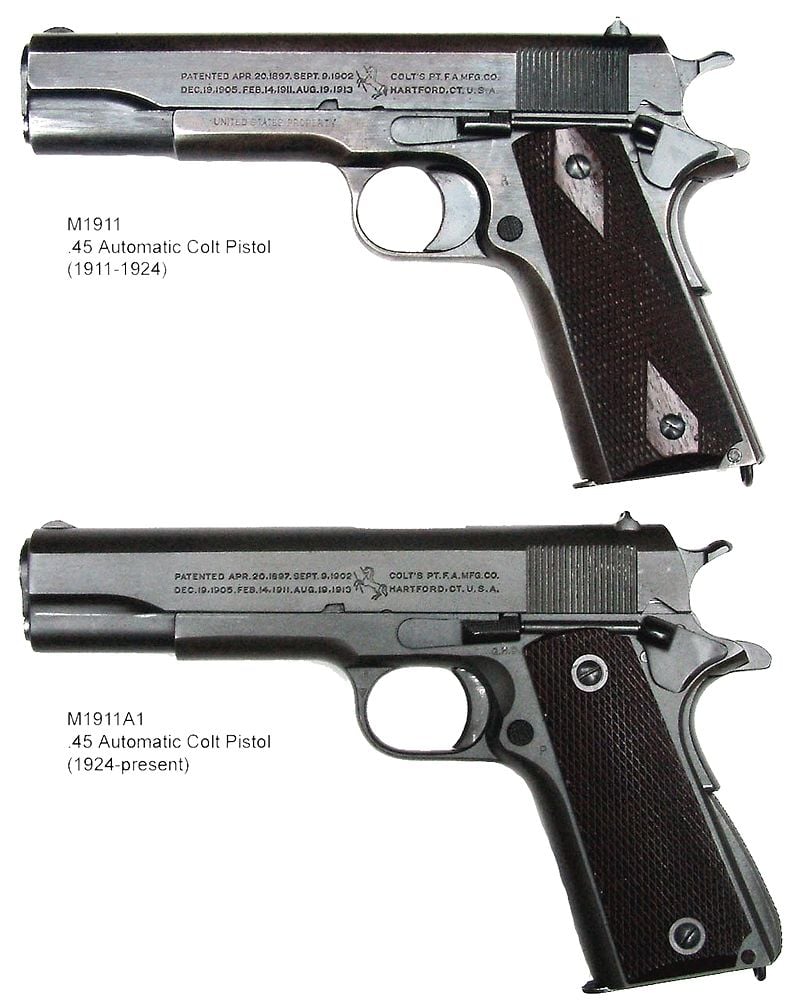
Springfield Armory shortened the trigger, added cutouts behind the trigger, arched the mainspring housing, extended the grip safety, and simplified grip checkering.
These improvements in ergonomics made it more comfortable to shoot and handle.
The M1911A1 became the superior option and is the gun most 1911 owners have in some form or another.
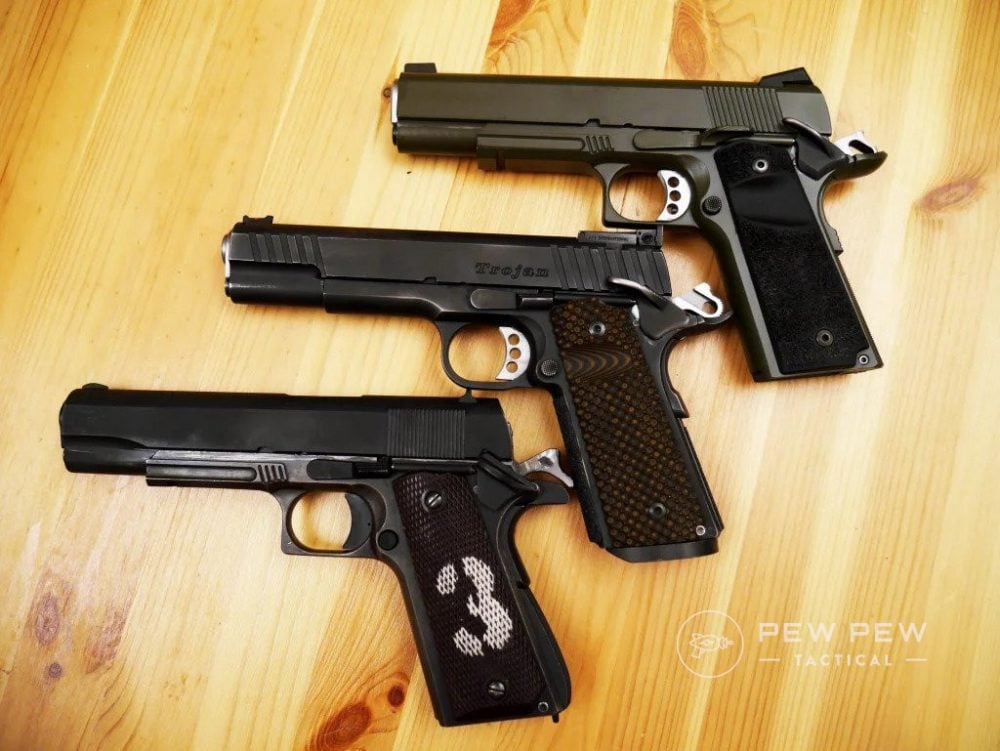
WWII Breaks Out
Once more into the breach, the world found itself at war once more. Again, the 1911 found its way to the field.
Almost 2 million 1911s went into production during the war and issued to Allied forces.
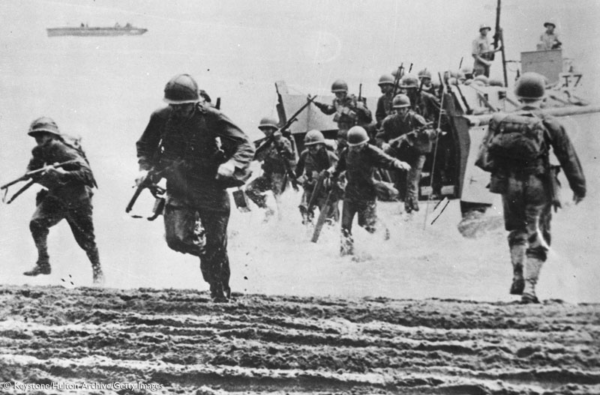
The M1911A1 became a favorite with not just American troops, but Allied forces all around.
British Commandos reportedly adored the pistol, as did OSS personnel and South African forces. It saw widespread use.
Prices accurate at time of writing
Prices accurate at time of writing
-
25% off all OAKLEY products - OAKLEY25
Copied! Visit Merchant
So many models came into production that the military canceled post-war contracts. Instead, they rebuilt and fixed the World War II veterans with new parts.
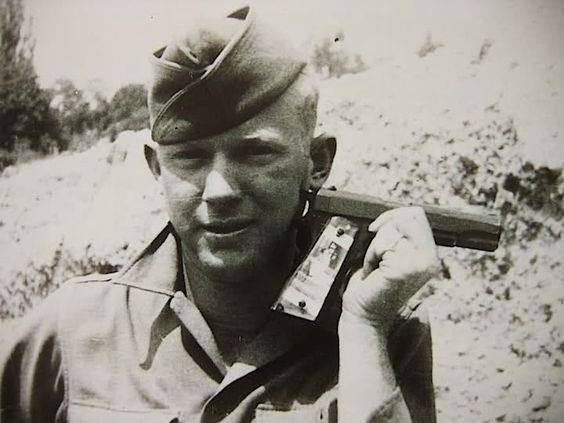
Medal Of Honor awardee Thomas Baker also wielded a 1911 valiantly in action. As a Sergeant, he guarded and held a perimeter in Saipan.
He and the other soldiers of the 27th Division faced an attack from Japanese forces on all three sides.
Baker fought like a madman. He emptied his rifle and began using it as a club. He fought while wounded and refused evacuation.
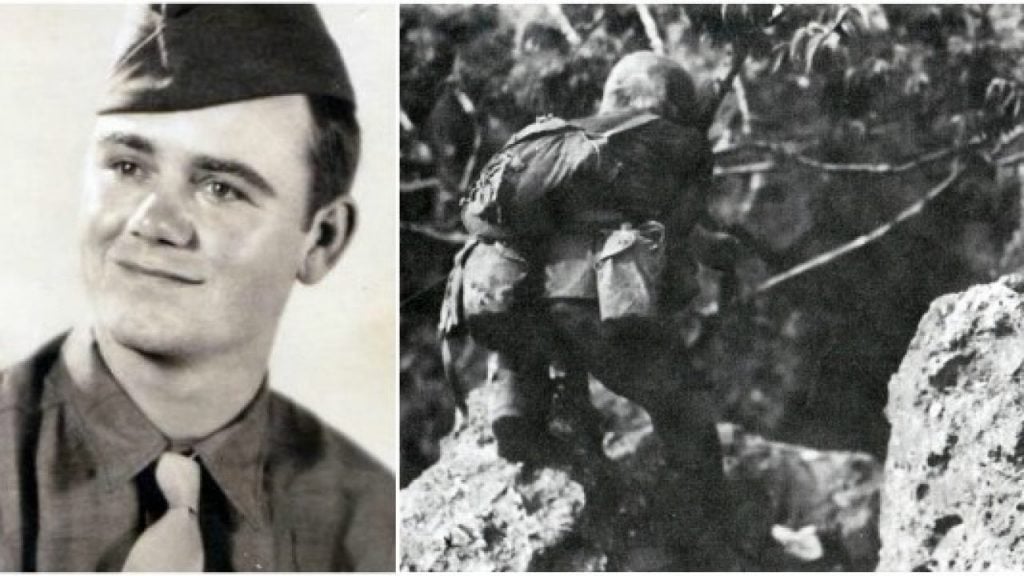
He reportedly asked for any available ammo. He received an M1911 with eight rounds. Leaning alone against a tree, he waited, armed for the enemy.
After the fighting ended, he was found leaning on that same tree, no longer among the living.
In his hand, he clasped an empty M1911, and in front of him lay eight dead Japanese soldiers.
M1911A1’s Continued Service
The M1911A1 continued to serve American forces as the General issue sidearm throughout Korea, Vietnam, and the numerous conflicts of the not-so-Cold War.
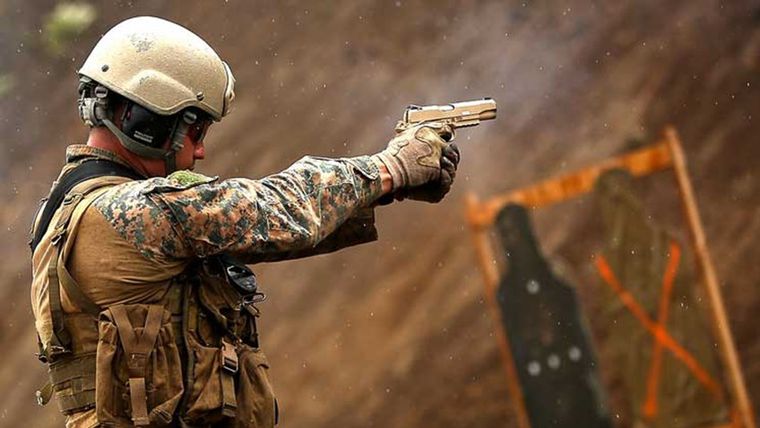
In 1985, though, the Beretta M9 finally replaced the M1911A1.
That said, it takes time to outfit an entire military force with new pistols, so the M1911A1 chugged along up until the first Gulf War.
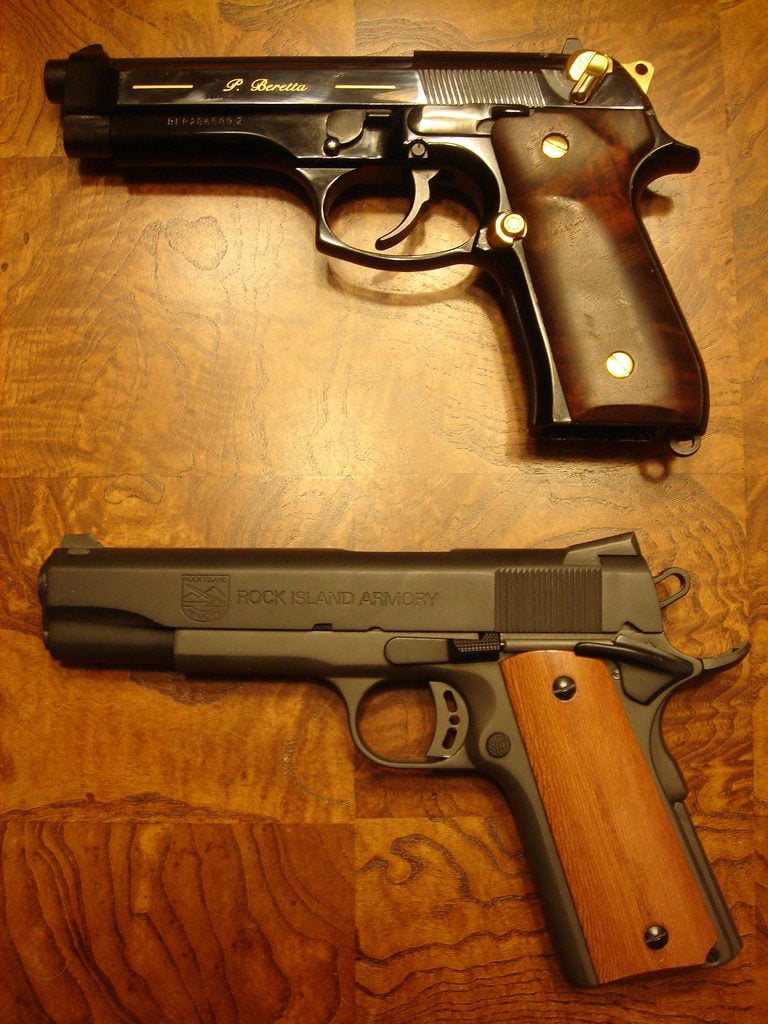
By the early 1990s, the M9 crept its way into the hands of the vast majority of the United States military.
However, the M1911A1 was not done yet.
It remained the pistol of choice for some special operations troops. Notably, Delta Force clung to their high-end M1911A1s, as did Marine Force Recon.
Force Recon clung to the M1911A1 longer than anyone else. As such, the Colt M45A1 was the final 1911 produced for military service.
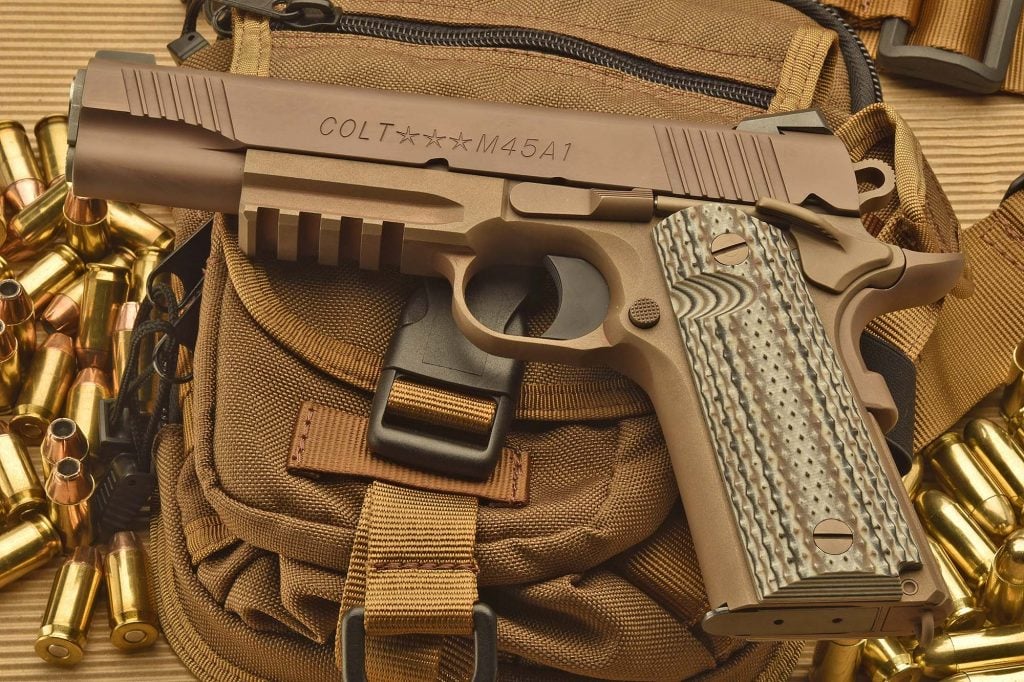
Even the M45A1 is declining in popularity among operators, though, and will soon be just another pistol left behind in history.
Prices accurate at time of writing
Prices accurate at time of writing
-
25% off all OAKLEY products - OAKLEY25
Copied! Visit Merchant
The M1911A1 is no spring chicken, and it makes sense that after a century of service, it’s finding its way to retirement in the hand of professional gunslingers.
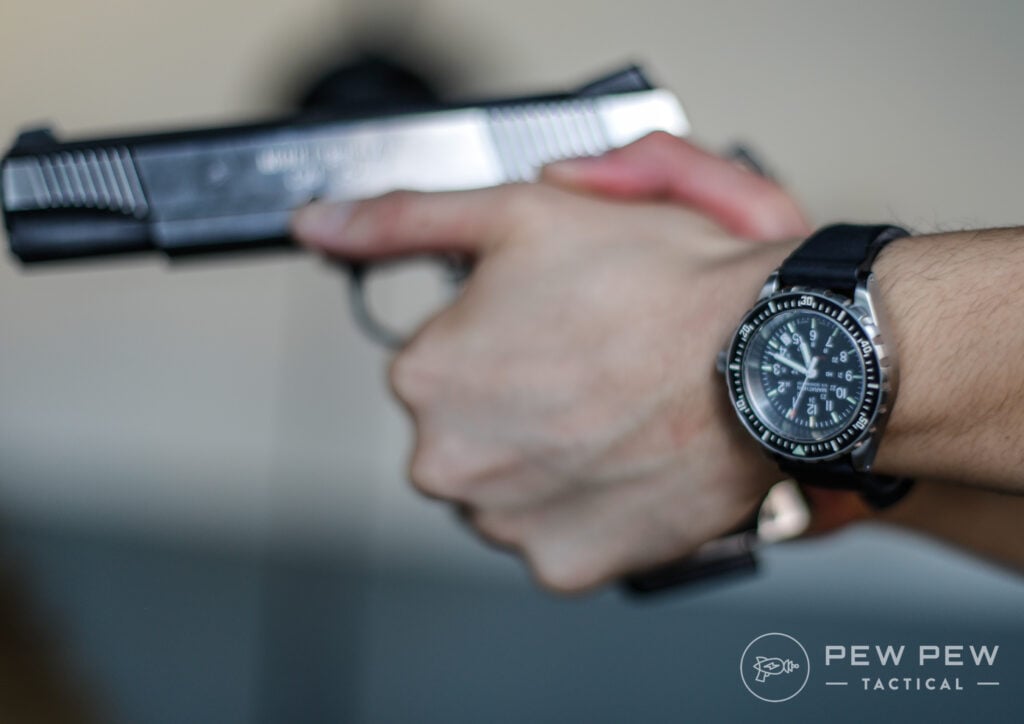
Conclusion
While the military slowly eliminates the use of the M1911, I doubt the M1911 will ever die.
With so many manufacturers producing so many different models of the 1911, it won’t likely ever fade from popularity.
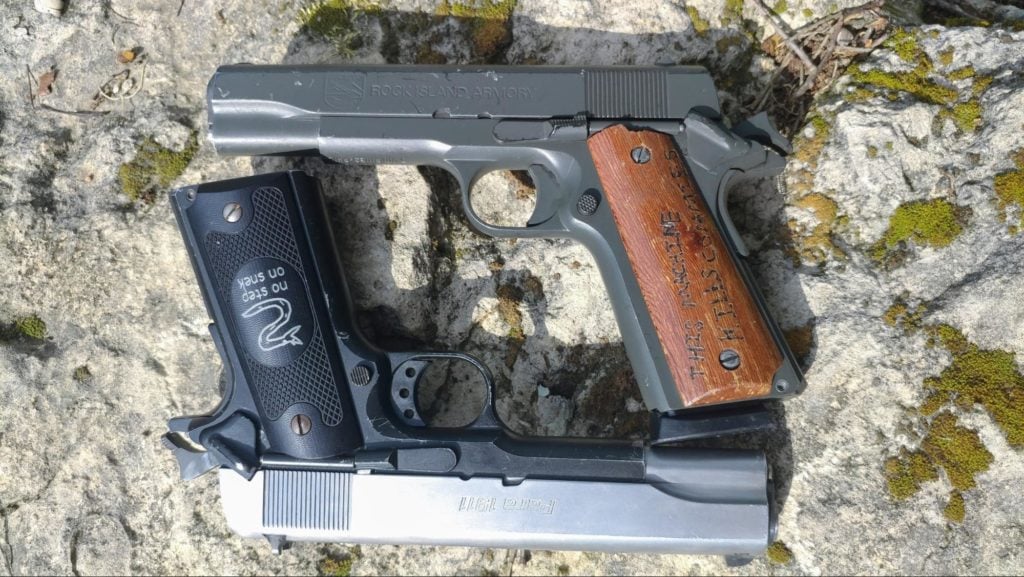
Modern double-stack designs are allowing the old dog to learn new tricks, and guns from Staccato see serious use from police forces and competition shooters.
The 1911 occupies a permanent place in the minds, imaginations, and gun safes of American shooters.
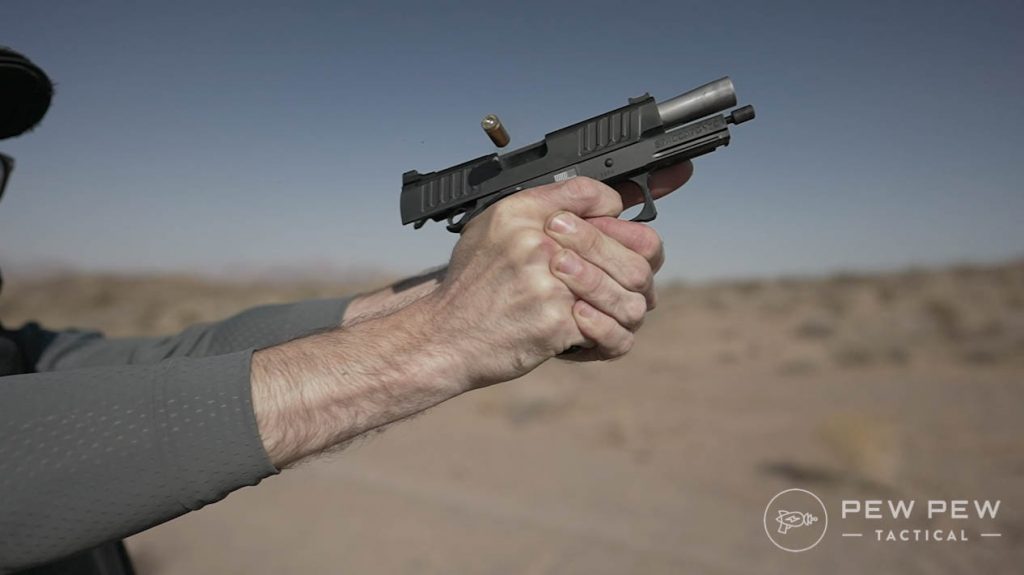
What’s your favorite part of 1911 history or your fave 1911? Let us know below. Need more 1911 content? Check out the Best 1911s for the Money, the Best 9mm 1911s, or the Best 1911 Upgrades!

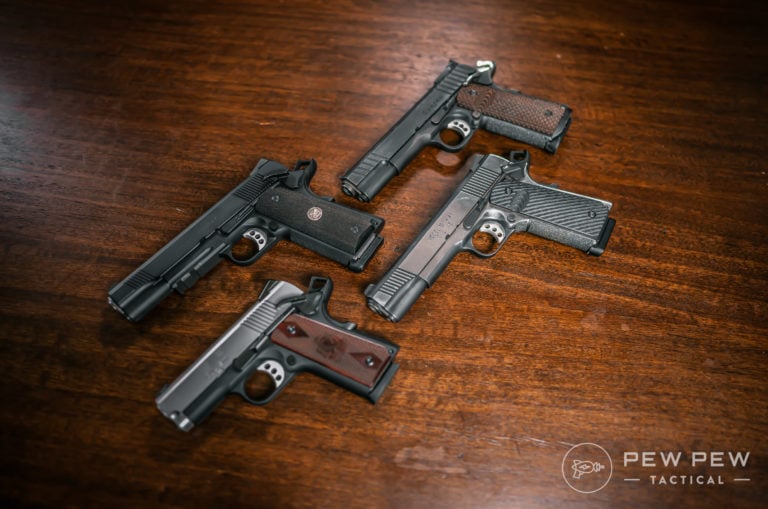
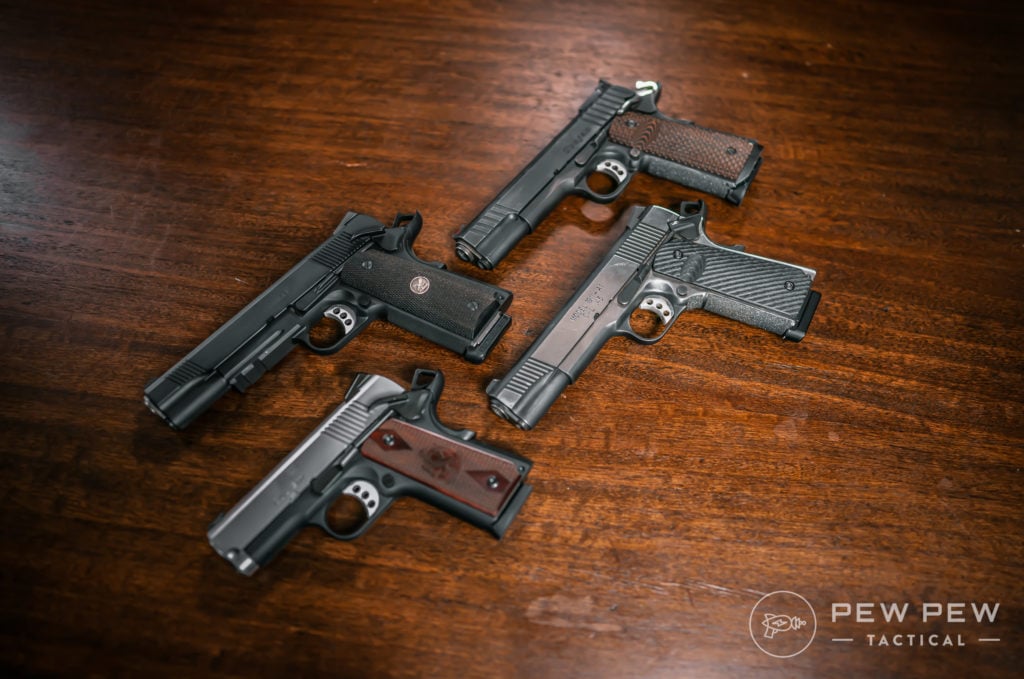









3 Leave a Reply
Excellent article!!! My all time favorite pistol,next to another Colt-Single Action Army!
ICONIC WEAPONS!!
Agreed. Very informative article. Thank you JMB!
Great article. Funny, but just the other day while reading another article the 1911 eas mentioned. I thought, at that time, how and where the 1911 originated. You explained, thanks. I have read several other articles on your site which have been very interesting and beneficial.